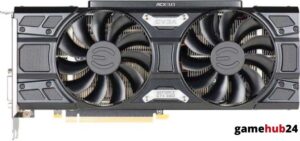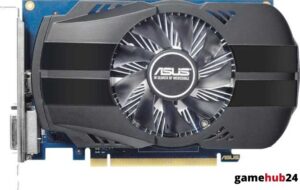A specialized field known as GPU programming and development makes use of the enormous processing capacity of graphics processing units to carry out complex calculations. This field has a big impact on a lot of different industries, like artificial intelligence, 3D rendering, high-performance computing, and video game development.
A combination of software and hardware principles, GPU programming has completely changed a number of industries. Its capacity to run multiple programs concurrently, making use of a GPU’s many cores, has greatly increased computational capability. Artificial intelligence, 3D rendering, high-performance computing, and video game creation have all been significantly impacted by this. Complex AI and ML algorithms have been made easier to create, data processing has been expedited, and rich virtual environments have been made possible thanks to GPU programming. It has also improved the visual fidelity of VR experiences and 3D scenes.
- GPU programming’s parallel execution capability has transformed video game development, enabling the creation of detailed graphics and complex physics simulations.
- In high-performance computing, GPU programming has accelerated data processing and enabled the implementation of complex algorithms.
- GPU programming has significantly influenced AI and ML, facilitating faster training times and more accurate models.
- In 3D rendering and VR, GPU programming has enhanced visual fidelity and performance, paving the way for more immersive experiences.
What are the basics of GPU programming?
The specialist subject of Graphics Processing Unit (GPU) programming, often known as GPU coding, focuses on utilizing a GPU’s power to execute intricate calculations. It’s a special fusion of software and hardware ideas that calls for a thorough comprehension of each. The key to GPU programming is being able to build programs that can run in parallel and make use of all the cores that a GPU has to offer. The majority of typical CPU programming is sequential, thus this is a sharp contrast. As a result, computing power is increased significantly, which makes GPU programming an essential tool in domains such as machine learning, data research, and video game production.
What is the role of CUDA programming in GPU development?
An essential component of GPU development is CUDA, an application programming interface (API) architecture and parallel computing platform developed by Nvidia. It enables programmers to employ the so-called GPGPU method, which involves using a graphics processing unit with CUDA support for general purpose processing. Compute kernels can be executed thanks to CUDA, which gives direct access to the parallel computational components and virtual instruction set of the GPU. These kernels are little functions or programs that work with data and are written in Python, Fortran, or CUDA C/C++. The importance of CUDA in GPU programming cannot be overstated, as it offers a rather simple platform for programmers to take advantage of the GPU’s capabilities.
How does OpenCL contribute to GPU programming?
A framework called OpenCL (Open Computing Language) allows programmers to create applications that run on a variety of heterogeneous platforms, such as GPUs, CPUs, and other processors. It’s important for GPU programming since it offers a consistent, cross-platform API for these kinds of jobs. OpenCL is a flexible tool in the GPU programming toolbox since it enables programmers to create code only once and execute it on any hardware that implements the OpenCL standard. This is especially useful when portability and interoperability are essential since it enables programmers to design code that is compatible with hardware from various vendors.
Did you realize that graphics rendering isn’t the only use for GPU programming? To expedite complicated computations, high-performance computing (HPC) makes extensive use of it. Large volumes of data must be processed in parallel in domains like scientific computing, machine learning, and data analysis, where this is especially helpful.
What is the importance of DirectX in GPU development?
Microsoft’s set of APIs known as DirectX is essential to GPU development, especially for 3D animation and video game production. It offers a standardized interface for managing multimedia-related tasks on Microsoft platforms, particularly those involving video and game programming. Rendering 3D graphics is one of the main uses for DirectX’s Direct3D component, which mostly depends on the GPU. DirectX frees developers from the entanglement of hardware-specific details so they may concentrate on the creative parts of their projects by putting a layer of abstraction between the hardware and the programmer. This makes it a crucial tool for GPU programming, particularly for making apps that are both aesthetically pleasing and highly performant.
How does GPU programming impact video game development?
The creation of video games is significantly impacted by GPU programming. Rich, complex, and immersive virtual environments can be created using the graphics card coding techniques employed in GPU programming. Developers may produce games with more intricate physics models, fluid gameplay, and detailed graphics by shifting the laborious task of graphics rendering to the GPU. The user has a more realistic and captivating game experience as a result. Moreover, real-time ray tracing and other sophisticated features that greatly improve game visual fidelity can be implemented with GPU programming.
What is the role of Vulkan API in game development?
A key component of game creation is the low-overhead, cross-platform Vulkan API for 3D visuals and computation. It enables more effective multi-threading and gives developers direct control over the GPU, which boosts performance and lowers CPU consumption. The design of Vulkan is distinct because it considers the capabilities of contemporary GPUs as well as the requirements of contemporary applications, including gaming engines. Vulkan gives developers the ability to optimize their programs to maximize the performance of the underlying hardware by offering a lower degree of abstraction for the hardware. Because of this, it’s an extremely useful tool for game creators who want to push the limits of what’s conceivable in terms of performance and graphics.
How does OpenGL enhance video game graphics?
An API for rendering 2D and 3D vector graphics that is cross-platform and cross-language is called OpenGL (Open Graphics Library). Because it offers a variety of features for manipulating pictures and images, it plays a significant role in improving the graphics in video games. Because of its extensive cross-platform compatibility and ability to produce high-quality graphical representations, OpenGL is a preferred option for game makers. OpenGL allows complicated sceneries and plenty of objects to be displayed in games without taxing the CPU by processing data on the GPU. As a result, the gameplay runs more smoothly and the graphics seem better, improving the whole gaming experience.
Advice: If you’re using an Nvidia GPU, you should think about studying CUDA before beginning to develop on a GPU. Nvidia developed the CUDA platform and API paradigm, which enables developers to use a graphics processing unit (GPGPU) that is CUDA-enabled for general purpose processing. It’s widely utilized in the industry and reasonably simple to master.
Why is shader development crucial in video game development?
An essential component of creating video games is shader creation. The final appearance of what you see on the screen is determined by little programs called shaders that execute on the GPU. They have control over several aspects such as texture mapping, brightness, contrast, and color. Shaders are capable of producing a vast array of effects, from straightforward color shifts to intricate lighting and shadow simulations. A game’s visual attractiveness can be greatly improved by using efficient shaders to create environments that are more realistic and immersive. Furthermore, shaders can be tuned to function well on the GPU, guaranteeing that the speed of the game is not hampered by intricate visual effects.
What is the significance of GPU programming in high-performance computing?
A key component of high-performance computing (HPC) is GPU programming. Tasks requiring a high level of computational capacity are ideally suited for GPUs due to their parallel processing capabilities. Workloads on a GPU can be distributed throughout its numerous cores, allowing for faster and more efficient task completion than with a conventional CPU. This is especially helpful in domains like scientific computing, where fast processing of massive volumes of data is required. In order to further improve performance, GPU programming also makes it possible to construct sophisticated algorithms that make use of the GPU’s architecture.
How does GPGPU contribute to parallel computing?
A method known as “general-purpose computing on graphics processing units” (GPGPU) makes use of the GPU to carry out operations that are typically handled by the CPU. Because it enables multiple threads to execute simultaneously, GPUs play a major role in parallel computing, greatly increasing computational job speeds. Large volumes of data must be processed in parallel in domains like scientific computing, machine learning, and data analysis, where this is especially helpful. A vital tool in the field of high-performance computing, GPGPU uses the GPU’s power to process data more quickly and use resources more effectively.
What are tensor cores and why are they important?
Some GPUs contain specialized hardware called tensor cores, whose purpose is to speed up matrix operations, which are essential to many machine learning and scientific computations. Their significance stems from their ability to execute calculations for both accumulation and mixed-precision matrix multiplication in a single operation, thereby greatly reducing processing time. This makes them especially helpful in domains where these kinds of operations are typical, such artificial intelligence and deep learning. Tensor cores are an important component of contemporary GPUs since they can greatly increase the performance of applications in these domains by speeding up these computations.
How does GPU programming aid in stream processing?
GPU programming can be very helpful for stream processing, a kind of computation that deals with the constant flow of data. The high-volume, high-velocity data streams typical in domains like real-time analytics and Internet of Things (IoT) applications are well-suited to a GPU’s parallel processing capabilities. A GPU’s several cores may handle various data streams in turn, speeding up and optimizing the completion of tasks. This makes it possible to process data in real-time or almost real-time, which helps enterprises make choices more rapidly and obtain new insights. As a result, GPU programming is an effective tool for stream processing.
How does GPU programming influence artificial intelligence and machine learning?
Machine learning (ML) and artificial intelligence (AI) are significantly impacted by GPU programming. GPUs’ capacity for parallel processing makes them perfect for the intensive computing demands of machine learning and artificial intelligence algorithms. These algorithms can be executed more rapidly and efficiently by splitting up the effort among a GPU’s numerous cores, which results in quicker training times and more accurate models. Moreover, GPU programming makes it possible to design intricate algorithms that make use of the architecture of the GPU to improve speed even more. Because of this, GPU programming is an essential tool for creating and implementing AI and ML systems.
What is the role of GPU programming in deep learning?
Deep learning, a kind of machine learning that makes use of multi-layered neural networks, heavily relies on GPU programming. Training deep learning models takes a lot of computing power, and a GPU’s parallel processing capabilities are ideal for this kind of work. Training deep learning models is faster and more effective when the task is divided among a GPU’s several cores. This makes it possible to create more intricate and precise models, which enhances performance in applications like predictive analytics, natural language processing, and image identification. Consequently, a crucial element of contemporary deep learning workflows is GPU programming.
How does GPU programming contribute to artificial intelligence?
An important contribution to the field of artificial intelligence (AI) is GPU programming. GPUs’ capacity for parallel processing makes them perfect for the intensive computing demands of AI systems. These algorithms can be executed more rapidly and efficiently by splitting up the effort among a GPU’s numerous cores, which results in quicker training times and more accurate models. Moreover, GPU programming makes it possible to design intricate algorithms that make use of the architecture of the GPU to improve speed even more. Because of this, GPU programming is an essential tool for creating and implementing AI systems.
What is the future of GPU programming in 3D rendering and VR development?
Virtual reality (VR) development and 3D rendering have bright futures for GPU programming. GPUs’ capacity for parallel processing makes them ideal for handling the demanding computing demands of virtual reality and 3D graphics. Complex 3D sceneries can be produced more rapidly and effectively, resulting in smoother performance and more realistic images, by dividing the task among a GPU’s several cores. Additionally, GPU programming makes it possible to integrate cutting-edge technologies like real-time ray tracing, which can greatly improve the visual fidelity of virtual reality and 3D scenarios. The need for more realistic and immersive 3D and VR experiences is expected to increase, which will make GPU programming in these domains more crucial.
How does ray tracing improve 3D rendering?
A rendering method called ray tracing creates visuals that are remarkably lifelike by mimicking the actual behavior of light. By offering a greater degree of visual realism than conventional rendering techniques, it enhances 3D rendering. Ray tracing may create visuals with more realistic lighting, shadows, and reflections by precisely modeling the interactions of light with virtual objects. But ray tracing requires a lot of computing power, which is where GPU programming comes in. Ray tracing computations can be completed more quickly and effectively by utilizing the GPU’s capabilities, which opens the door to using ray tracing in real-time applications like VR and video games.

What is the role of compute shaders in VR development?
Compute shaders are essential to the development of VR. They are a kind of shader that can be applied to physics computations and particle system updates, among other activities that are not immediately related to painting triangles and pixels. Compute shaders can be utilized for a variety of VR applications, such as physics simulations for realistic object interactions, spatial computations for VR audio, and computationally expensive post-processing effects. Compute shaders can assist in maintaining the high frame rates necessary for a satisfying VR experience by shifting these responsibilities to the GPU. As a result, they are an important tool in the VR developer’s arsenal.
How does GPU programming enhance computer graphics?
GPU programming makes computer graphics much better by allowing the development of visually appealing and high-performing applications. GPUs’ capacity for parallel processing makes them perfect for handling the demanding computational demands of graphics rendering. More speed and efficiency can be achieved when rendering complex graphics by dividing the effort among a GPU’s several cores. Moreover, sophisticated features like complex shaders and real-time ray tracing can be implemented with GPU programming, greatly improving the visual integrity of computer graphics. GPU programming is therefore an essential tool for creating excellent, eye-catching applications.

















